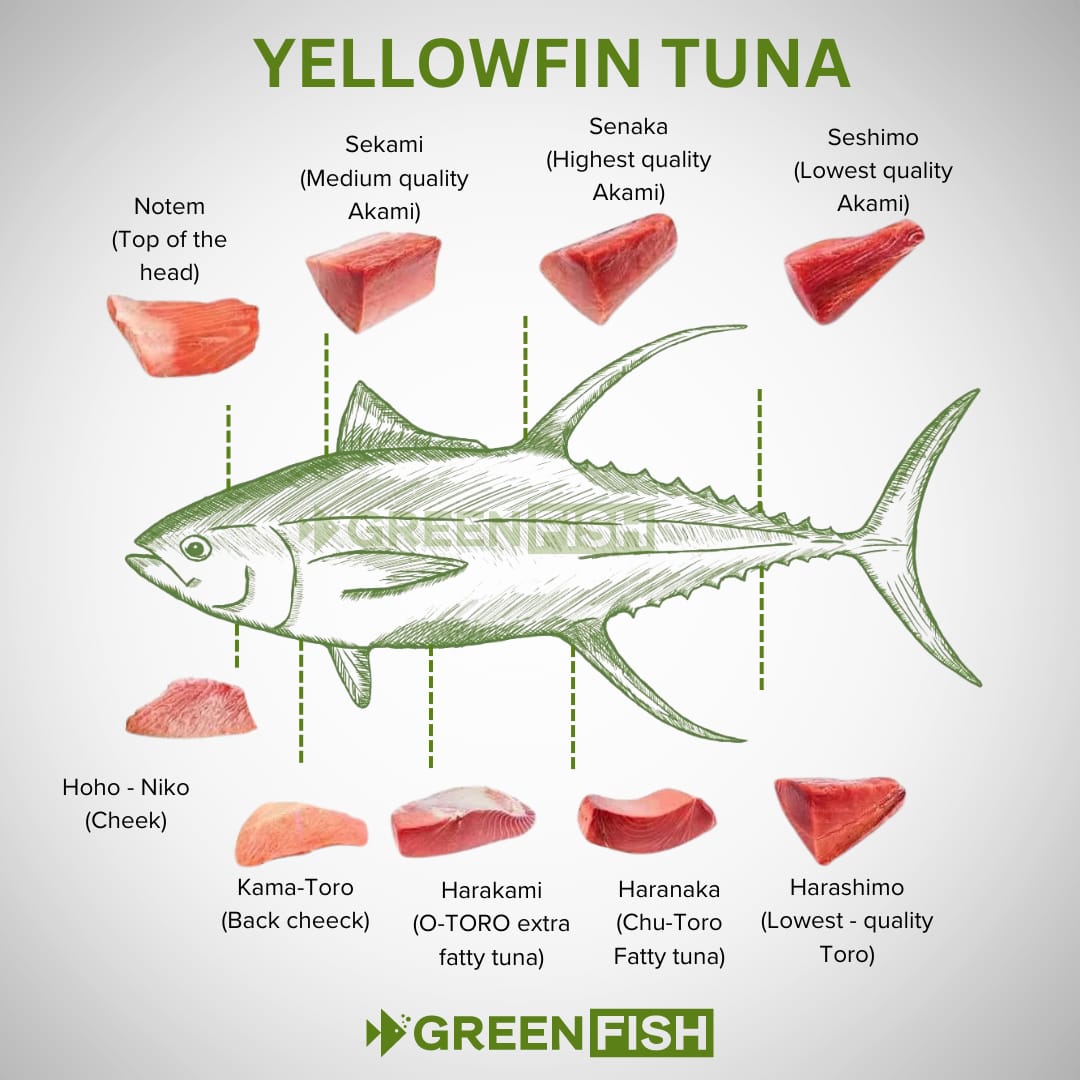
Unlocking the Flavour: Understanding Different Tuna Cuts
Share
In the culinary world, understanding the anatomy of an ingredient can elevate your cooking from good to exceptional. Just as in beef, where different cuts are suited for various dishes, the same principle applies to tuna. Whether you're grilling a tuna steak or crafting delicate sushi, selecting the right cut can make all the difference in taste and texture.
Tuna, with its four loins comprising two top loins and two bottom loins, offers a spectrum of flavours and textures. The bottom loins boast the prized belly , while secondary cuts from the head and cheekbones add depth to culinary creations. Pairing the correct cut with the intended dish is crucial for maximising satisfaction.
In the world of sushi, where precision and quality reign supreme, the O-toro (Belly) reigns as a highly sought-after cut. This portion, rich in fat, delivers unparalleled flavour and a lusciously buttery texture that tantalises the palate. It's no wonder why O-toro commands a premium price—it's a sensory experience like no other.
For those opting for a tuna steak on the grill, selecting cuts from the secondary part of the fish can ensure a tender, flavorful result. These cuts often contain less sinew and connective tissue, ideal for quick, high-heat cooking methods. Conversely, when crafting sushi, opting for cuts with minimal sinew ensures a silky-smooth texture that melts in your mouth. Additionally, when slicing sashimi, cutting across the grain ensures a tender bite that enhances the overall dining experience.
Color plays a pivotal role in both presentation and flavour when it comes to tuna. Different parts of the fish exhibit varying hues, with leaner cuts sporting a deeper red coloration. This visual diversity not only adds aesthetic appeal to dishes but also offers a spectrum of flavours and textures to explore. Whether selecting sections of Akami for its vibrant hue or opting for lighter-coloured cuts, each choice contributes to a nuanced culinary experience.
Understanding the nuances of tuna cuts allows chefs and home cooks alike to unlock the full potential of this versatile ingredient. From the front half of the top loin, perfect for delicate sashimi, to the back half, ideal for cooking applications, each cut offers its own distinct flavour profile. While these cuts may come with a higher price tag, their unparalleled quality and flavour make them a worthwhile investment for any culinary enthusiast.
Just as in the world of beef, where different cuts cater to various dishes and cooking methods, tuna offers a similar range of options for culinary exploration. By selecting the right cut for the intended dish and understanding how each part contributes to flavour and texture, you can elevate your cooking to new heights and indulge in a truly exceptional dining experience.
